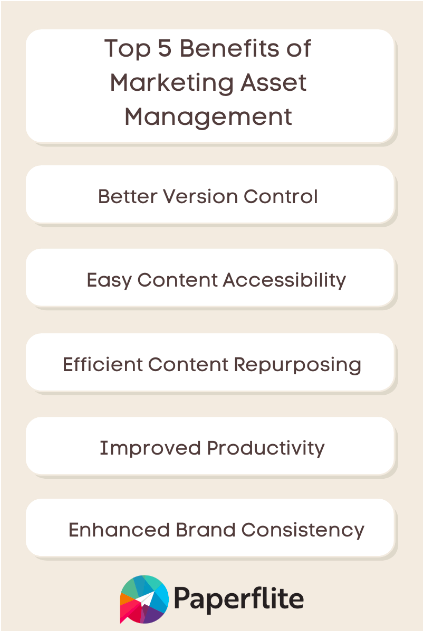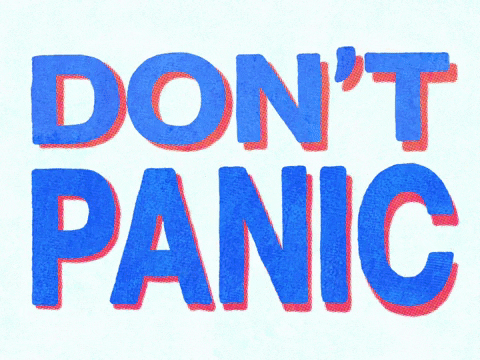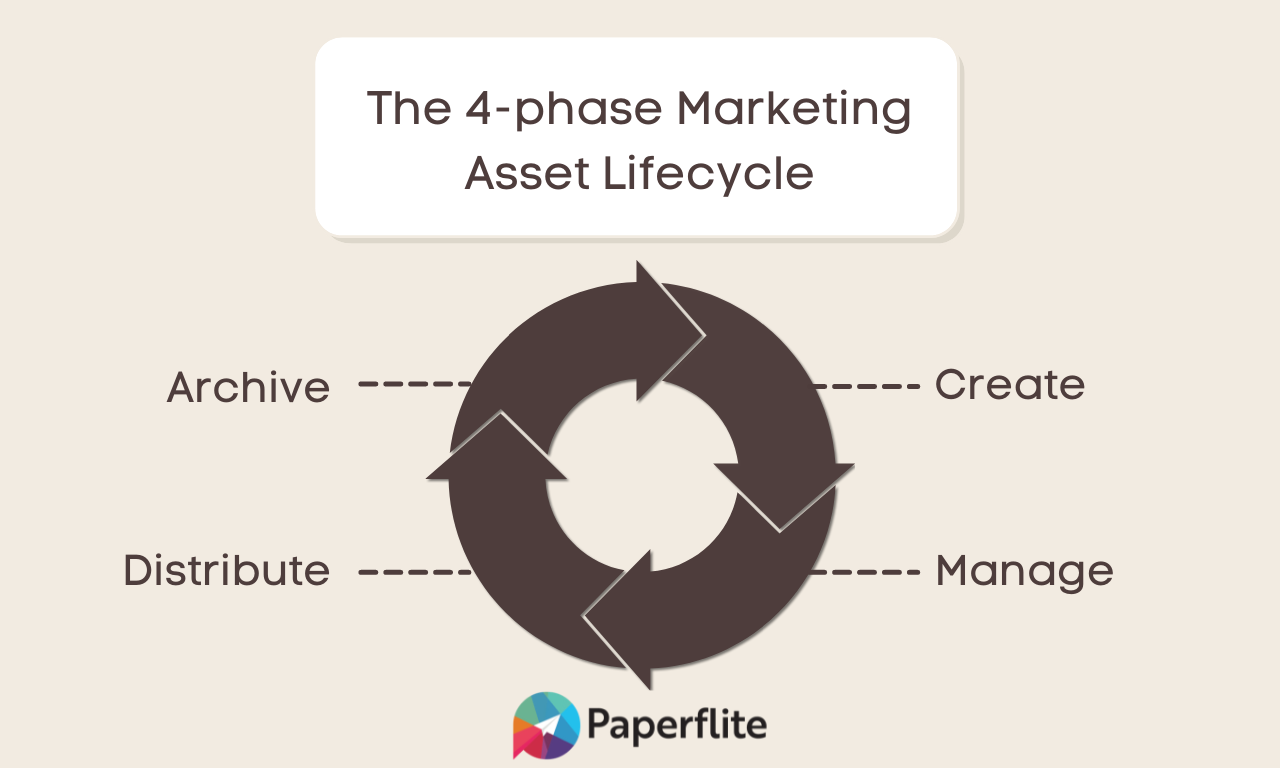Your All Inclusive Guide To Marketing Asset Management
At Paperflite – we always recommend you reserve fishing for the weekends.
To expand, for the obvious reasons – What we try to imply is that you do not have to waste time fishing for the right content – and that implies if you maintain them right with a good platform – the problem is kinda-sorta solved.
See where we are getting at?
Today’s businesses can’t function without marketing assets – brochures, whitepapers, battle cards, artwork, RFP responses, solution presentations and all other marketing content that defines what is what.
And while all areas of the business rely on content, the case is particularly intense when it comes to marketing.
Marketers depend on assets such as logos, style guides, brochures, ready-reckoners, cheat sheets, reference guides, tutorial videos and much more rich media content to define and communicate the brand, and ensure it operates with a coherent identity and voice.
Brand assets such as photos help businesses market and sell their products and services. Meanwhile, cross-channel marketing campaigns demand a steady input of videos, copy and other content snippets and templates.
These requirements mean that marketing teams may be sitting on tens of thousands of digital assets, but all too often, these end up scattered across servers and services in a disorganised and piecemeal fashion.
Without central storage and easy asset retrieval, time is wasted, and assets are at risk of being duplicated or forgotten. And without the ability to securely share files among creative partners, compliance teams or other stakeholders, the inefficiencies multiply, and there’s a greater risk of errors.
What Is Marketing Asset Management (MAM)?
Marketing Asset Management (MAM) is the process of collecting, organising, and storing marketing assets in a centralised repository, i.e., it creates a single source of truth. A marketing asset management platform helps teams collaborate better through proper content access and distribution rights.
Difference Between Digital Asset Management and Marketing Asset Management
Another term that gets used interchangeably with marketing asset management is Digital Asset Management (DAM). While they work similarly, their use cases are quite different.
The similarity between these terms is that both these tools and workflows serve the same purpose, i.e., they centralise the assets, manage access rights, and track asset usage.
The difference between DAM and MAM is that DAM is a generalised asset management system to asset digital assets for the organisation. On the other hand, MAM platforms offer some exclusive features for marketers.
You can integrate the MAM platform with your CRM tools, live chat apps, sales, and marketing automation platforms. You can pull (and not upload) marketing assets directly from the MAM software to your website or marketing automation tool and track how users engage with them.
Also, a feature-rich MAM tool lets you customise your workspace according to your brand guidelines, create personalised experiences for buyers, design customised prospect journeys, and track asset performance to make better decisions.
(Call it namedropping or a humblebrag, but Paperflite has all these features. Give us a holler if you want to see how it fits your marketing workflow!)
5 Benefits of Marketing Asset Management
As the scope of marketing grows, so do the team size and the number of marketing assets. Marketers have to work with multiple teams and departments to create and share content. The absence of a robust system makes it difficult to access the right asset at the right time.
Marketing asset management enables marketers to break down the dreaded silos (We are allowed to use marketing jargon once in a while) and streamline the workflow. Here are the five key benefits of effective marketing asset management:
1. Better Version Control
The version control feature enables you to pick the file’s most recent and approved version. So, you no longer get confused between final-revised-version.png and final-version-revised.png.
And that’s not it. You might be working on multiple versions of the same file for different mediums. Version control maintains all these versions (and older versions, too!) so that you can easily access them in one place.
For instance, you may need an older version of a file to design creatives for social media. Instead of making changes to the latest iteration or starting from scratch, you can pick the relevant version and edit it on the go.
2. Make Content Easily Accessible
The typical file searching process has its limitations. You can search assets by name and sort by date, type, or size. For even a slightly advanced search, you need to know things like wildcard characters/operators and file extensions.
The process is tedious, and not to mention that even if you find the right asset, you need to ensure that you have picked the correct version.
Discovering the right content is always underrated but one of the most valuable features.
MAM platforms allow you to search assets with advanced filters such as keywords, categories, collections, asset type, date modification, colour, tags, and status. The easy accessibility of assets saves a lot of time and staves off impending frustration.
Let The Sellers Spend Time Selling, Not Searching
3. Efficient Content Repurposing
Content repurposing is probably the fastest way to scale up content creation. In content repurposing, you use the existing content or assets to create new content in different formats. You can also use the same content piece and repurpose it for different stages of the buyer’s journey.
Recently released an industry report? You can repurpose its content into social media visual snippets, a slide deck, an article, and an interactive flipbook to promote it.
A marketing asset management tool consolidates all marketing assets in one place, allowing you to search an asset, convert and download it into the desired format, and voila! You just exceptionally reduced the time required to produce a content piece.

4. Boost Productivity
There is a lot of back and forth involved in getting feedback and approval for marketing assets. It’s not just the marketing department, but you need to get the green light from the compliance and legal department as well. This can slow down the overall process.
With the centralisation of assets in the MAM platform, everyone can view and approve the files in one place. Along with efficient asset approval, better version control, accessibility, and faster repurposing, there is no doubt that marketing asset management helps marketers improve productivity.
5. Maintain Brand Consistency
Maintaining a consistent brand across all marketing channels is a challenge. Not having the latest guidelines on the logo, fonts, image library, etc. can cause folks to rely on older marketing assets. Salespeople may send outdated versions of case studies or presentations that can confuse prospects.
A marketing asset management tool ensures everyone has access to the most relevant and updated brand assets. This ensures a coherent brand experience throughout the buyer’s journey.

How to Organize Marketing Assets
It all begins with the Marketing asset lifecycle.
Imagine the following scenario. Your team is working on a full-fledged marketing campaign to promote a product launch. It’s a tight deadline, and the team has to work on landing pages, emails, ad creatives, social media visuals, and the whole shebang.
However, you can’t seem to find the right version of the brand logo prescribed in the style guide. Also, you aren’t sure whether to go with final-revised-version.png or final-version-revised.png for the email header. Everything is buried under the email trail, and you can’t reach out to the designer because they are on sick leave.
Chaos ensues. Even the large friendly letters printed on the cover of The Hitchhiker's Guide to the Galaxy aren’t helping.

Content creation is a continuous process, and managing marketing assets becomes a challenge after a point. There are ebooks, blog posts, images, logos, videos, and audio files, among other sales and marketing assets. If your content storage is all over the place, you will have poor content accessibility and trouble projecting a consistent brand image.
The solution to this problem is to establish the right workflow and tools to manage marketing assets. This is where Marketing Asset Management comes in.
The 4-phase Marketing Asset Lifecycle
Different marketing assets have different shelf life. Each of them goes through a series of phases, from creation to archival. This series of phases is known as the marketing asset lifecycle. Knowing a little bit about each phase helps in organising the marketing assets.
Phase 1: Creation
The creation phase begins with a requirement.
This is the phase where you write content, draw animations, design graphics, record videos, or produce podcast episodes. Once a requirement is laid out, the team brainstorms, sets the ideal outcome/vision, comes up with ideas/samples/rough draft, and iterates until the team produces the ideal asset.
Phase 2: Management
The asset is reviewed and approved in the management phase by the concerned stakeholders (design head, marketing manager, legal team, etc.). After the approval, the file attributes (file name, asset type, version, format, owner, subject, and keywords) are added while uploading it to the MAM platform.
This phase's next part is making the asset available to the relevant team members. Setting access rights ensures that only authorised personnel can edit the asset, while others can only view, comment, or download it.
The management stage ascertains that the up-to-date versions of assets are accessible for usage.
Phase 3: Distribute
The distribution capacity of the marketing asset management software brings in efficiency. Sharing assets via email is jarring; getting involved simply gets impossible as more people get involved.
MAM enables you to distribute files with people through public links. Also, the embed option allows you to directly add files to your website or marketing emails without having to upload them to your CMS or marketing automation software.
Furthermore, analytics data such as views and downloads help you understand the type of content people prefer and guide your content strategy accordingly.
Shameless plug: Paperflite’s content intelligence feature lets you go even more granular with tracking. You can analyse open rate, time spent on each file, reshares, average attention time, and popular content among your buyers.
Make Your Content Available Anywhere, Anytime, Any Device
Phase 4: Archival
Once an asset has served its purpose for the time being, you can either preserve them or delete them.
You archive the assets when you don’t plan to use them for the foreseeable future. Preserving or archiving an asset stores it in a passive repository so that the main repository is clutter-free. You can easily retrieve the asset from the passive storage whenever you need it.
If you have no use of an asset after its usage, you can simply delete it from the MAM platform. However, it is advised to delete files once you have thoroughly evaluated that you don’t really need them because recreating them means you have to go back to the drawing board.
How DO YOU Organize Marketing Assets
Now that we have seen the concept of marketing asset management and the marketing asset lifecycle let’s look at how you can start with the MAM process. This section will help you set the nuts and bolts of the MAM process so that you’d already hit the ground running by the time you have implemented the MAM system.
Step 1: Start With a Content Audit
Hearing the term content audit makes many marketers break a sweat, and understandably so. It’s a complicated, uncreative activity that makes marketers run away from their computers.
However, it’s an essential step that you need to perform periodically and pays off in the long run.
Take inventory of your key content from the existing Martech tools like CRM, marketing automation, and CMS and categorise them based on their format. It helps to create a spreadsheet with an individual sheet for each format (Image, video, ebooks) and label them into the following categories:
- Usefulness/Relevance (If it is not relevant right now, archive it right away)
- Stage of the buyer’s journey
- Buyer persona
- Content type (Case study, white paper, industry report, teaser video, explainer video)
- Key metrics (Leads generated, ROI)
For the website content, you can scrape website links using an SEO tool into a spreadsheet and categorise the content similar to the above.
Note: With so much data scattered across various tools and apps, it becomes necessary to consider third-party integrations while shortlisting marketing asset management platforms.
Step 2: Standardize ‘File’ Naming Conventions
Introducing naming conventions helps you bring uniformity in how you name your files and add associated metadata.
Having a file naming guide or checklist similar to the brand guide allows you to keep the instructions handy when naming a file. Some tips for the naming conventions:
- Keep the file name descriptive yet short. Rely on common abbreviations.
- Follow a standard date format. Is it MMDDYYYY or DDMMYYYY?
- Avoid special characters. Instead, follow camel case (eCommerce), snake case (e_commerce), or Pascal case (ECommerce). (At this stage, the writer is just flexing about the programming 101 class they recently took.)
- Start with zeros for numbers. It’s better to start with 001 than 1 because it orders files in the right sequence. We all know the cringe that comes when file 10 shows up after 1 instead of 2.
Nailing the first two steps ridiculously simplifies marketing asset discovery. Marketers and salespeople can easily find assets by names and filter them further by categories like buyer persona, buyer stage, geography, market/industry, and technology.
Step 3: Pick a Marketing Asset Management Platform
The first two steps have acquainted you with the type of content and might have given you a rough idea of what you should look for in a MAM platform. The following suggestions would help you pick the marketing asset management system when you are evaluating the alternatives:
- Permissions: The tool should enable the admin to assign different roles and access rights to different individuals.
- Third-party integrations: You should be able to share your marketing assets from the MAM app to the various customer-facing tools such as CRM, marketing automation, sales automation, live chat, and file-sharing platforms within a few clicks.
- Content discovery: The platform should offer powerful search features that let you find assets based on their filenames and metadata/filters. Having a built-in AI-powered recommender system that suggests top-performing content is icing on the cake.
- Content experience: The software should come with readymade templates to build interactive content experiences that sales folks can customise on the go.
- Content distribution: Along with third-party integrations, the platform should also integrate with your email service (Gmail, Outlook, etc.) and offer browser add-ons to simplify content sharing.
- Content analytics: The team should be able to track asset performance to see which assets contributed to leads and revenue. Also, knowing how customers interact with different assets is a must-have feature.
Step 4: Train Your Team
After implementing the marketing asset management platform, train the marketing and sales teams on how to use the application. Go through the how-to videos and supporting material to learn how to use the MAM solution best.
Along with the platform training, it is necessary to make marketing asset management a part of the marketing process.
This will allow everyone to stick to the best practices throughout the marketing asset lifecycle.
Closing Thoughts
Top-performing marketers and salespeople have systems that enable them to focus on their key result areas, i.e., to positively impact the buyer and drive revenue.
Marketing asset management is one such part of the Martech jigsaw puzzle that makes marketing asset storage and distribution very efficient.

